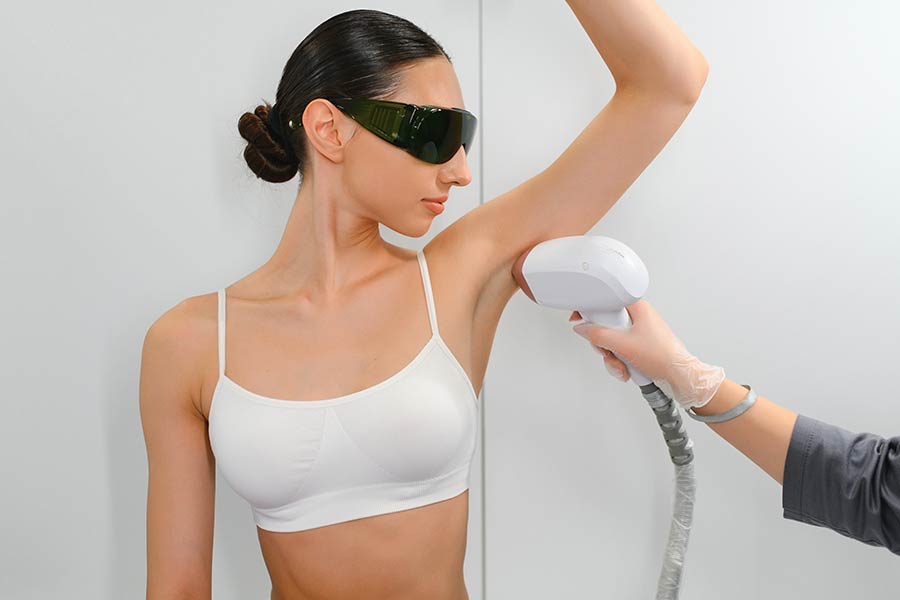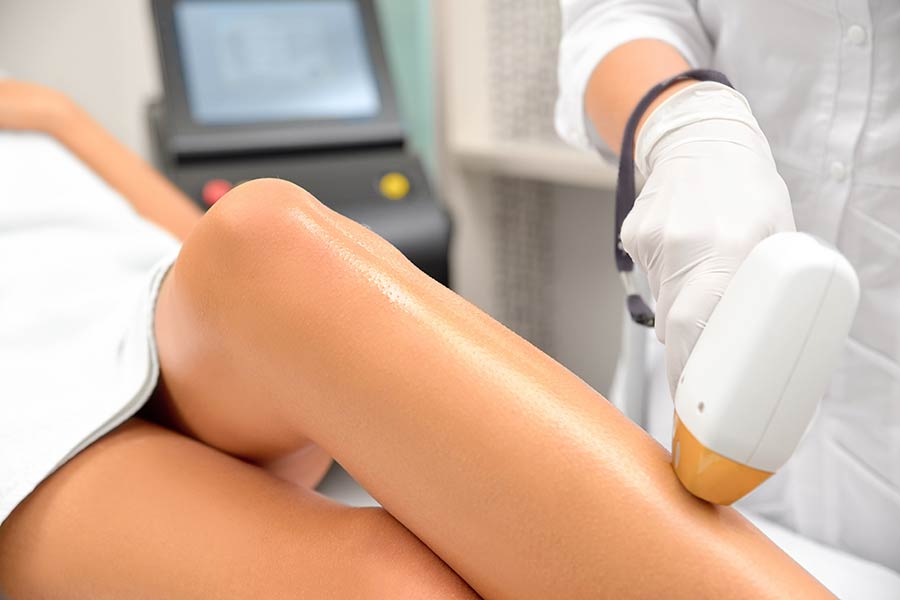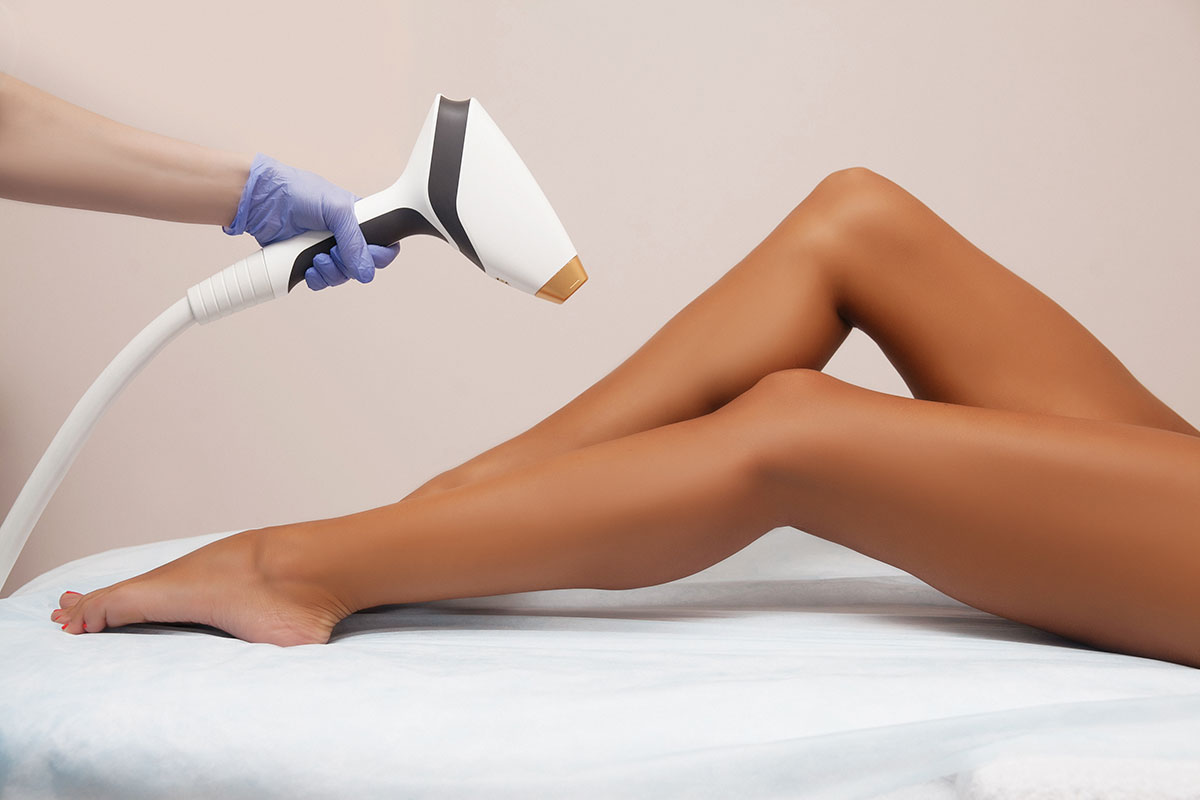Did you know 80% of folks who've tried laser hair removal rave about its game-changing benefits? Yeah, that's a lot of smooth skin walking around out there! If you're tired of the endless cycle of shaving, waxing, or plucking, laser hair removal sounds like your next best friend. But here's the million-dollar question: how long does this silky-smooth fairy tale last? Is it a brief guest appearance or more like a main character in your life story? We're diving deep into what makes laser hair removal tick and how it stacks up against the fuzz-fighting competition. Spoiler alert: You might just be saying goodbye to your razor for a lot longer than you thought.
Key Takeaways
- Laser hair removal can offer long-lasting hair reduction, but it's not a permanent solution. Most people need touch-up sessions for maintained results.
- Understanding your hair growth cycles is crucial as laser treatments are most effective during the growth phase. This insight helps in planning your treatment schedule.
- Initial treatments usually require multiple sessions, often 4-6, spaced out over several weeks to effectively target all hair in the desired area.
- Maintenance sessions are a must to catch new hair growth and keep the skin smooth. The frequency of these sessions varies based on individual hair growth patterns.
- The timeline for seeing visible results can differ from person to person, but many notice a significant reduction after 2-3 sessions.
- Extending the effectiveness of laser hair removal involves protecting your skin from the sun and following your clinician's advice on skincare post-treatment.
Understanding Laser Hair Removal
Basics Explained
Laser hair removal uses light to target hair follicles. This process reduces hair growth over time. It's not the same as waxing or shaving. Those methods remove hair temporarily. Laser treatments aim for lasting effects.
There's a key difference to note here. While some think laser treatment means no more hair forever, it's more about permanent hair reduction. Complete removal for life isn't guaranteed.
Several types of lasers come into play, like Alexandrite and Nd:YAG. Each works best on different skin and hair types.
Longevity Factors
How long results last varies from person to person. Hair color and thickness play big roles. Dark, coarse hair responds better than light, fine hair.
Hormonal changes can also affect regrowth. For example, pregnancy might bring back some hair in treated areas.
Following a treatment plan is crucial for the best outcome. Skipping sessions can lead to less impressive results.
Treatment Areas
Laser hair removal is popular for several body parts. Legs, underarms, and the bikini area are common choices. These places often see good results because of the type of hair they have.
But effectiveness can vary by area due to differences in hair density. Some spots might need more treatments than others to get smooth skin.
Skin Types
Safety first! Lasers must be set right for each skin type. This ensures the treatment is effective without harming the skin.
Darker skin may absorb more laser energy, leading to a need for extra sessions. But there's good news! Special lasers exist just for treating darker skin safely.
Hair Growth Cycles
Anagen Phase
The anagen phase marks the active growth stage of hair. During this period, hair follicles are busy pushing out new strands. It's crucial for laser hair removal because the treatment targets the pigment in actively growing hairs. This is why it's most effective now.
Laser beams focus on these active hairs, aiming to destroy their growth potential. Since not all hairs grow at the same pace, multiple sessions ensure that as many hairs as possible are caught in this phase. This strategy helps in gradually reducing hair growth over time.
Catagen Phase
Next comes the catagen phase, a transitional stage where hair growth slows down before stopping. In this short period, the hair prepares to enter its resting phase. Hairs in the catagen phase are less likely to be permanently removed by laser treatment.
Understanding this cycle underscores the importance of timing your treatments just right. The goal is to maximize the number of hairs caught in the anagen phase, where laser removal has its greatest impact. It's a delicate balance that requires expert guidance for optimal results.
Telogen Phase
Finally, there's the telogen phase, also known as the resting or shedding stage of hair growth. During this time, old hairs fall out to make room for new growth. Laser treatments have little to no effect on hairs in this stage.
This sheds light on why one session is never enough for permanent hair reduction. The cyclical nature of hair growth means that different hairs will be in various stages at any given time. Multiple sessions help ensure that more hairs can be targeted effectively during their vulnerable anagen phase.
Initial Treatment Expectations
First Session Results
After your first laser hair removal session, you might notice some immediate changes. However, it's important to set realistic expectations. Typically, a single treatment won't give you smooth, hair-free skin right away. Most people see a slight reduction in hair growth and possibly thinner hair.
You may also experience temporary redness or swelling around the treated area. This is a common reaction and usually subsides within a few hours to days. Remember, the true effectiveness of laser hair removal becomes more apparent over multiple sessions. Judging its success after just one treatment isn't accurate.
Progress Tracking
To really understand how well your treatments are working, keeping a photo log can be incredibly helpful. Snap pictures of the treated area before each session. This visual record makes it easier to spot differences that might not be obvious day-to-day.
Also, pay attention to changes in your hair's texture and how quickly it grows back. These subtle shifts indicate the treatment's impact over time. If you notice slower growth or softer hair, those are good signs.
It's wise to share your observations with your laser technician during follow-up appointments. They can use this information to adjust your treatment plan if necessary. Tailoring the approach based on your progress ensures better results in the long run.
Maintenance Sessions
Frequency Needed
After understanding initial treatment expectations, it's crucial to dive into the maintenance phase. Doctors often suggest a gap of 4-6 weeks between laser hair removal sessions. This timing allows your skin to recover and also targets hair at its new growth stage.
For some, this interval might change. It depends on how your body reacts and the area being treated. For example, facial hair might need more frequent sessions than legs.
Sticking to the schedule is key. Missing appointments can slow down progress. It's like taking two steps forward and one step back. So, it's important to keep up with your sessions for the best results.
Duration Variation
Now, let's talk about how long the whole process takes. Generally, completing laser hair removal takes 6 to 12 months. But why such a big range?
Several factors play a role here. First, everyone's hair grows differently. Some people have thicker or denser hair, which can take longer to treat effectively.
The size of the area being treated matters too. Removing hair from larger areas like the back or legs takes more time than smaller areas like the upper lip.
Remember, patience is key in this journey. Rushing or expecting instant results won't help. Trust the process and give it time to see those long-lasting smooth skin results you're aiming for.
Visible Results Timeline
Short-Term Outcomes
Right after the first few laser hair removal sessions, immediate hair loss can be noticeable. This is a good sign. It means the treatment is working. Hair will also start to grow back more slowly than before. This change happens within days to weeks after each session.
However, some people might see minor skin irritation. This includes redness or slight swelling around the treated area. These side effects are usually short-lived.
It's important not to make quick judgments about the treatment's success just from these early signs. The real effectiveness of laser hair removal unfolds over time.
Long-Term Expectations
As months pass, the long-term benefits of laser hair removal become clearer. Most people will see a significant reduction in hair growth in the treated areas. But it's crucial to understand that this doesn't mean all hair will be gone forever.
Over time, some new hairs might appear, or a few might have been missed during initial treatments. That's why touch-up sessions are often needed. They help catch any new growth and ensure smoother skin.
The key to getting the best results lies in patience and consistency. Multiple sessions, spaced out according to your specialist's advice, add up. They make sure that as many hair follicles as possible are targeted and deactivated.
After discussing maintenance sessions previously, it's clear how they fit into the overall timeline of achieving visible results from laser hair removal. Maintenance plays a crucial role in sustaining those hard-earned results over longer periods.
Extending Effectiveness
Post-Treatment Care
After seeing the visible results from laser hair removal, it's crucial to take care of your skin. One key step is to avoid sun exposure on the treated areas. The sun can harm your skin, especially when it's sensitive after treatment.
Applying soothing lotions or cool compresses helps too. They can ease any discomfort you might feel. It's like giving your skin a gentle hug, helping it heal and stay calm.
Another important tip is not to wax or pluck hairs between sessions. This can mess with the hair follicle that the laser targets. Instead, let the laser do its job without interference for the best results.
Lifestyle Considerations
Keeping up with your treatments makes a big difference. A consistent schedule means each session builds on the last one, making hair less likely to return. Think of it as attending every class during a school term; missing one could mean missing out on important stuff.
Protecting your skin from the sun isn't just for days at the beach. It’s vital before and after laser treatments too. Wearing sunscreen helps keep your skin safe and ensures better results from your laser hair removal journey.
Your skincare routine might need some tweaks as well. The technician who does your treatment can offer advice specific to your skin type and needs. This might include using gentler products or avoiding certain ingredients that could irritate your skin post-treatment.
Impact of Skin Type
Light Skin Tones
People with lighter skin tones have a bit of an advantage when it comes to laser hair removal. They can typically use a wider range of laser types. This is because lasers target the contrast between the color of the hair and the color of the skin. So, if you have light skin and dark hair, you're in luck. The contrast makes it easier for the laser to target and destroy hair follicles.
Certain lasers are especially effective for light skin tones. These lasers focus on the dark pigment in the hair against the light background of the skin. This means that people with light skin often see faster results and need fewer sessions. Also, they generally face a lower risk of pigmentation changes. But this only happens with proper laser selection. It's important to choose a technician who knows which laser is best for your specific skin type.
Dark Skin Tones
Advancements in laser technology have been a game-changer for people with darker skin tones. Now, safer treatments are available that reduce the risk of damaging their skin. Choosing the right technician is crucial here. You need someone experienced with treating dark skin tones. They will know which lasers work best and how to adjust them for your skin.
For those with darker complexions, there's a higher emphasis on post-treatment care. This is because there's a greater risk of pigmentation issues after treatment. Following your technician’s advice closely can help prevent these problems.
People with dark skin used to worry about laser hair removal. But now, thanks to better technology and skilled technicians, they can enjoy its benefits too. Just remember, taking care of your skin after treatment is key to avoiding any unwanted side effects.
Treatment Area Specifics
Facial Hair
Facial hair removal with lasers needs more sessions. This is because hormones greatly affect facial hair growth. Each person's face reacts differently to the treatment.
Laser treatments on the face must be precise. The skin here is delicate. Experts use care to avoid harming it. Popular areas for facial hair removal include the upper lip, chin, and sideburns. These spots often require careful attention due to their visibility.
Body Hair
Body areas like legs and back show results faster. This happens because these parts are larger and easier to treat in one session. Yet, how many sessions you need can change a lot depending on the area.
Sticking to the full treatment plan is crucial for body hair removal. It ensures you see the best results possible. For example, legs might not need as many sessions as arms or chest areas. But without completing all recommended sessions, full results might not appear.
Practical Advice for Clients
Before Treatment Tips
Before starting your laser hair removal journey, there are crucial steps to ensure optimal results. Avoiding tanning, including natural sun exposure and self-tanners, is essential. This precaution helps prevent complications during the treatment. The skin should be in its most natural state.
Shaving the target area 24-48 hours before your session can significantly impact the effectiveness of the treatment. It allows the laser to focus on the hair roots directly without burning the surface hair. This step is simple but vital for achieving the best outcomes.
Discussing any medications you're taking or skin conditions you have with your technician is also critical. Certain medications can make your skin more sensitive to the laser. Sharing this information ensures a safer and more customized treatment plan.
Aftercare Strategies
After each laser hair removal session, how you care for your skin greatly influences both your comfort and the success of the treatment. Moisturizing regularly with a gentle lotion can soothe the skin and speed up healing. It's important to choose products recommended by your technician to avoid irritation.
For at least 24 hours post-treatment, steer clear of hot showers, saunas, and any form of strenuous exercise. Heat can exacerbate redness and discomfort in the treated areas. Keeping activities low-key helps minimize these side effects.
Monitoring your skin for any unusual reactions is crucial. While mild redness and swelling are common, anything beyond that should prompt a call to your technician. They can provide guidance or adjustments for future sessions if necessary.
Closing Thoughts
Laser hair removal might sound like a magic wand for unwanted fuzz, but it's not a one-and-done deal. You've seen how your hair's growth cycles, skin type, and even the area being treated play huge roles in how long you'll enjoy smooth skin. Maintenance sessions are part of the gig if you're aiming for that constantly sleek look. Think of it as a journey rather than a quick trip. And hey, don't forget the practical advice we shared; it's gold for making the most out of each zap session.
hat's your next move? If laser hair removal sounds like your alley, dive deeper into finding a reputable clinic. Your journey to ditching the razor for good starts with that first step. Let's get you on the path to feeling more confident in your skin!
Frequently Asked Questions
How long does laser hair removal usually last?
Laser hair removal can offer semi-permanent results. Most people experience hair-free periods for several months to years. However, you might need occasional maintenance sessions to keep the area smooth.
What should I expect after my initial laser hair removal treatment?
After your first session, you'll notice hair shedding and a reduction in regrowth. Don't expect all hair to disappear immediately; it's a process that requires multiple treatments.
How many maintenance sessions will I need for laser hair removal?
Maintenance needs vary, but most clients opt for 1-2 touch-up sessions per year to keep their skin silky smooth. Your personal schedule may differ based on your hair growth cycle and the treated area.
When will I start seeing visible results from laser hair removal?
Visible results typically show after 2-3 treatments, with significant reduction noticeable after each subsequent session. Patience is key; it gets better and smoother over time!
Can I extend the effectiveness of my laser hair removal treatment?
Yes, by avoiding sun exposure and following your technician's aftercare advice closely. Keeping your skin healthy enhances the treatment's longevity.
Does skin type impact the effectiveness of laser hair removal?
Absolutely! Laser technology works best contrasting between hair color and skin tone. However, advancements have made it more effective across a wider range of skin types than ever before.
Are certain areas of the body more responsive to laser hair removal than others?
Yes, areas like the underarms and bikini line often respond quicker due to the nature of the hair and its growth cycle compared to, say, facial or arm hair. Each spot on your body tells its own unique story when it comes to laser treatments.












